Everything You Need to Know About CBD and the Endocannabinoid System
You probably see CBD oil popping up all over the place. There are so many on the market now. How do you know which is best? And why do you even need CBD oil?
History of the Endocannabinoid System (ECS)
While cannabinoids have possibly been used for medicinal properties since the stone age, it wasn’t until the 1980’s and into the mid-1990’s that scientists began to understand how the endogenous endocannabinoid system works and the impact and benefits of exogenous cannabinoids. It started back in 1895 when two researchers were able to isolate and identify a plant cannabinoid, called cannabinol (CBN). Then not until the 1930’s did someone figure out the structure and properties of CBN. (2)
It wasn’t until the 1960’s that cannabinoid research really started. Dr. Ralph Mechoulam, an Israeli organic chemist, isolated CBD (cannabidiol) and the psychoactive cannabinoid, THC. Still no one was sure about the mechanism as to how THC worked in the body. (25)
In addition to CBD, the plant cannabinoid that is becoming well known, the hemp plant contains other compounds such as the CBN mentioned above, as well as, CBC (cannabichromene), and CBG (cannabigerol). These plant compounds are known as Phyto cannabinoids so that they can be distinguished from naturally occurring cannabinoids in the body called endocannabinoids. (4)
In the 1980’s, American scientists discovered receptors in the brain, called CB1 and receptors in the spleen and immune system, called CB2. It was at this point that they began to understand how cannabinoids work. In the 1990’s they discovered the naturally producing endocannabinoids. This system regulates homeostasis in the body. (2) The cannabinoids that our body produces affects our emotions, the nervous system, digestion, immune system, sensation of pain and other aspects of our health (4).
With the discovery of CB1 and CB2 receptors in the body they learned that CB1 is more prominent. CB2 is found outside the central nervous system and is associated with the immune system and digestion (4). CB1 is in major brain regions and is more involved with cognition, fear and memory (4). This endocannabinoid system, that was found only 30 years ago, has been found to be instrumental in maintaining our health. (1)
Thus, they discovered that we have an endocannabinoid system and if we do, then our own bodies must make endocannabinoids. We have our own natural THC and CBD. In fact, the runners high is thought to be the release of our own THC.
While the research is still in the early stages and there is still much to learn, it is thought that CBD improves the communication along the nerve pathway, thus feeling less pain, less depression or anxiety.
How the Endogenous Cannabinoid System Works
The endogenous endocannabinoids are the major activators of CB1 and CB2, but they are not neurotransmitters. What’s even more interesting is that they go against the natural flow of the typical chemical synaptic signaling. A neuron that releases a chemical neurotransmitter, such as GABA for example, is designated on the pre-synaptic neuron and the target neuron that has receptor sites for that neurotransmitter is the post synaptic neuron. Endocannabinoids are instead released from the post synaptic cells and travel backwards where they then encounter CB1. They essentially act like a traffic cop and can inhibit the release of excitatory or inhibitory neurotransmitters. Thus, when you release your own endocannabinoids, you are influencing the signals in your brain. (1, 21)
The endocannabinoid system plays a vital role in our health and we are still learning more, but it has been established that this system plays a role in sleep, appetite, digestion, mood, motor control and immune function, reproduction and fertility, pleasure and reward, memory, temperature regulation and pain (2) So think about it. If the endocannabinoid system is out of balance, all these aspects of your body can be affected!
Your endocannabinoid system provides its own cannabinoids when your system is working properly. During periods of stress, your endocannabinoid system is activated. These endocannabinoids surge to where they are needed and fit into the receptor sites, mainly the CB1 and CB2 sites. They then send signals to the surrounding tissue and the brain to help you address anxiety, stress, inflammation and more. Your body will try to maintain balance of the endogenous cannabinoids and will use them only when necessary but today, health challenges can deplete your natural supply. (4) This is when it can be very helpful to support your endocannabinoid system with exogenous cannabinoids also called Phyto cannabinoids.
Just like poor eating habits, chronic inflammation and chronic stress can impact other organs and systems in the body, it can also impact your endogenous endocannabinoid system and thus impact your mental health as well.
What is CBD?
CBD (cannabidiol) is one of the most studied cannabinoids found in the hemp plant. There are other cannabinoids they have discovered, known as CBC (cannabichromene), CBN (cannabinol), and CBG (cannabigerol) but most of the research up to now has been on CBD. Hemp contains over 100 phyto-cannabindoids (3). More research, I think, will show the benefits of using all the cannabinoids instead of isolating just CBD.
CBD has been shown to relive pain, reduce seizures, balance blood sugar, stop nausea, has antibacterial properties, used to fight tumors, calms the mind, relieves anxiety, and provides relief from skin conditions.
Before you go out and buy CBD you need to read the information below first so that you don’t buy an inferior product
Why It is Important to Know How is it Grown, Harvested and Produced?
The more I read, the more I prefer vertically integrated companies. This means that from planting to harvesting and developing, it is all by the same company and not out-sourced. Many companies do not grow their own hemp but instead source from numerous other farms. Ones that grow their own have more control over the plant and quality of the plant. If companies are getting hemp plants from various farms, each batch of hemp production can be a little different.
CBD is sourced from the buds or flower of the hemp plant. Most CBD products will say ariel parts and most of the cannabinoids are from the flower. If you are unsure if the product is using buds and flowers (and possibly leaves), just ask!
Farmers will also sell unused hemp biomass to a business that wants to extract leftovers. (24). In my opinion, this seems like it would be an inferior product since you know nothing of the growing conditions nor the health of the plant.
You want to ideally know the soil it is grown in, where it is grown, and if they use pesticides and herbicides. A company that grows and harvests their own plants should be more than happy to answer your questions and have you come visit their farm. This is more important than you may realize. You do not want to be using a product in which the plants are grown in a contaminated soil.
In fact, they use the hemp plant as a hyperaccumulator, meaning it can absorb contaminants from the soil while it grows and use it for bioremediation to clean the environment of toxic heavy metals and organic pollutants. Thus, you don’t want to use hemp grown in non-food grade conditions and being sold as CBD for medicinal purposes. If you do, you may be adding many contaminates into your body such as lead and mercury. (24)
How Much CBD is Really in the Product You Just Bought?
How do you know if you are really getting as much CBD as the label claims? Sadly, there are some products that have been tested and shown to contain zero CBD content! You can ask to see their independent lab results which, by the way, I have from the CBD products I use and sell. (3) The company should be transparent.
There are going to be a lot of shady products on the market right now, so it is important to do your homework or get your CBD from a holistic practitioner who has done the research for you or from a reputable company-again they should be happy to answer your questions!
We still do not know how much of the CBD enters the central nervous system and more research needs to be done in this area. However, you still want a product that contains what it says on the label.
For greater bioavailability, choose a tincture and place it under your tongue (for a sublingual dose). If you dont like the taste, the next option is capsule form. Topicals, such as creams and salves, work great for localized discomfort.
From what I have read (but I am not an expert on CBD), it seems that reducing the size of the CBD compound using lipid infusion improves absorption and bioavailability. But that being said, while more research continues, choose either a CO2 extraction method or a lipid infusion method product to ensure greater quality.
Is it Organic?
In the past, hemp was not even allowed to be certified. Know the producer of the product. Some are using organic practices but are not yet certified due to cost and hemp regulations. Ask if they use herbicides and pesticides. Ask about the quality of the soil-remember that the hemp plant can take in heavy metals from the soil and thus so will you if you use an inferior prodcut. Even if it is not certified organic, it may still be a reputable product. Some smaller companies follow organic practices but cannot afford the organic certification process and labeling.
What Type of Extraction Method is Used?
Many companies are still using cheaper methods that include solvents such as propane, hexane, pentane and butane. You do not want to consume these products so stay away from these!
Other companies will use a CO2 extraction method. This method, also called subcritical or supercritical CO2 extraction, is a method that uses high pressure under low heat to isolate, preserve and maintain the purity of the CBD oils in the hemp plant. They then mix this concentrate with a carrier oil such as olive oil or MCT. This method is more expensive and involves more complex equipment and expertise, but it ensures quality.
The method that is a bit newer is the infusion method. Companies that use the lipid infusion method believe that you don’t get all the plant compounds extracted from the traditional herbal extraction methods. The lipid infusion method soaks the plant in medium chain triglycerides (MCT) or coconut oil and then using pressure and low heat, the hemp and sediment is strained out and you are left with your finished product. A low heat temperature is needed in CBD extraction because the heat converts the CBD from the inactive form into the active form.
This method is more labor intensive and more expensive as well but worth it for a quality product.
Personally, I think CO2 and Lipid Infusion products are good to use and depends on your preference. It really comes down to quality of the product.
Will the Product Have THC?
What I didn’t know until doing more research into CBD and hemp is that yes, hemp plants have some THC compounds, although very little. A full spectrum CBD oil, by law, must contain less than 0.3% of THC by weight. There are some products that are free of THC and they should say this on the label. (4)
Can I Use Hemp Oil or Hemp Seed and Get the Same Benefits?
No. While both products are good, you would not use them for the same reasons as you would CBD oil. Hemp oil can be used in raw dishes (don’t cook with hemp oil) and hemp seeds are great in baked goods and smoothies or just eaten right out of the bag. They are rich in omega fatty acids, but they do not contain the cannabinoids that you will find in CBD oil. (3)
CBD Benefits and the Research
- Epileptic Seizures (5)
- Parkinson’s (6)
- Huntington’s Disease (7)
- Improve Cerebral blood flow (8)
- For treatment resistant schizophrenia (9)
- IBS (10)
- Crohn’s Disease (10)
- Inhibits gene expression in aggressive breast cancer cells (11)
- MS pain (12)
- Stress (13)
- Depression (13, 15, 20)
- Liver Disease (14)
- Anxiety, PTSD, Social Phobias (15, 16, 18, 20)
- Migraines (17)
- Reduces binge drinking (19)
- Sleep Disorders (20)
There have been many more studies that have shown positive outcomes for skin conditions and acne, psychotic episodes in those with schizophrenia, strokes, pain, respiratory disorders, diabetes, neuropathy, cancer, IBD, asthma, eating disorders and osteoarthritic pain to name a few. There are more and more studies being conducted on the use and benefits of CBD. Many of the studies on CBD are only a few years old and only a handful of studies appear before the 2000’s.
CBD and Medication Interactions
CBD can be a safe alternative to prescription medications but if you are on medications and want to add in CBD oil, you should discuss it first with your health care professional. It is estimated that 60% of the medications on the market currently are processed via the liver by the P450 family of enzymes.
This same enzyme family is also responsible for metabolizing CBD. This means the liver may have double duty, responsible for metabolizing your medication and the CBD. While CBD is being broken down in the liver, your medication may take second fiddle to the metabolizing process.
This means the drug may stay in your system longer than it should and could also cause toxic levels of your medication in your blood stream. Go to this link for an extensive list of medications that are metabolized by Cytochrome P450. (22) https://www.cpsbc.ca/files/pdf/Methadone-Medications-Cytochrome-P450-3A4.pdf
CBD and Dosing
Always start at the lowest dose. We all react differently, and all do well on different doses of medications, herbs and supplements as well so there is no set dose. It does appear that using more is not necessarily better but instead think of a bell shaped curve in which low and high doses may have no impact but that moderate dose does. (23). There seems to be a sweet spot and adding more to that dose is not going to give you any greater benefit. While some people feel the benefits right away, it can take up to 4 weeks until many benefits are realized. (25)
Avoid taking it right at bedtime even if you are using CBD for insomnia, until you find out how you respond to the product. From my experience thus far, I find that if you take it every now and then it won’t be as effective as if you take it daily like you would your multivitamin. Work with your health care professional to titrate up to an amount that provides symptom relief. After 2-3 months, people can usually reduce their use to a maintenance dose.
Work with the person who is selling you the product so that they know the reasons why you want to use it and can help you find your starting dose. While CBD is beneficial, don’t expect it to be a cure all but rather another component to healthy living.
Bottom Line: Much of the research is new yet promising on the benefits of CBD oil and the importance of an optimal functioning endocannabinoid system. It can be very confusing knowing what CBD products to avoid and which the best on the market. Work with a health professional that you trust, someone who you know will do the research for you. And don’t be afraid to ask questions about the product. Anyone who is proud of their product will share information with you! Lastly, if you are on meds, work with your health professional if adding in CBD.
Sources
(1) https://www.ncbi.nlm.nih.gov/pmc/articles/PMC3997295/
(2) https://echoconnection.org/discovery-endocannabinoid-system/
(3) https://functionalremedies.com/blog/news/how-we-make-cbd-oil
(4) https://www.terrytalksnutrition.com/health-articles-oil-for-pain-cancer-and-more/
(5) http://www.cannabis-med.org/studies/ww_en_db_study_show.php?s_id=42&
(6) http://www.cannabis-med.org/studies/ww_en_db_study_show.php?s_id=142&
(7) http://www.canabis-med.org/studies/ww_en_db_study_show.php?s_id=97&
(8) http://www.ncbi.nlm.nih.gov/pubmed/14583744
(9) http://www.cannabis-med.org/studies/ww_en_db_study_show.php?s_id=182&
(10) http://www.ncbi.nlm.nih.gov/pubmed/16751708
(11) http://www.ncbi.nlm.nih.gov/pubmed/18025276
(12) http://www.ncbi.nlm.nih.gov/pubmed/17257464
(13) http://www.ncbi.nlm.nih.gov/pubmed/18433869
(14) http://www.ncbi.nlm.nih.gov/pubmed/18426499
(15) http://www.ncbi.nlm.nih.gov/pubmed/19839939
(16) http://www.cannabis-med.org/studies/ww_en_db_study_show.php?s_id=306&
(17) http://www.ncbi.nlm.nih.gov/pubmed/20353780
(18) http://www.cannabis-med.org/studies/ww_en_db_study_show.php?s_id=315&
(19) http://sciencedirect.com/science/article/pii/S0091305713002104
(20) http://www.nutritionaloutlook.com/womens-health/what-studies-say-about-hemp-cbd
(21) https://ministryofhemp.com/blog/endocannabinoid-system-and-cbd/
(22) https://www.solcbd.com/blogs/news/118305477-what-pharmaceutical-drugs-can-interfere-with-cbd
(23) https://www.wellandgood.com/good-advice/how-much-cbd-cannabidiol-dosing/
(24) https://ministryofhemp.com/blog/hemp-soil-remediation
(25) Greenberg, A. (information via discussions on CBD) www.cbdgarage.com

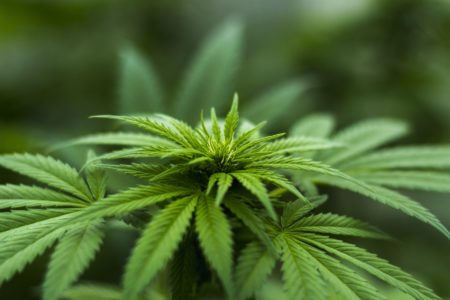
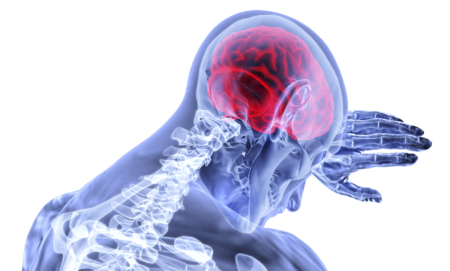

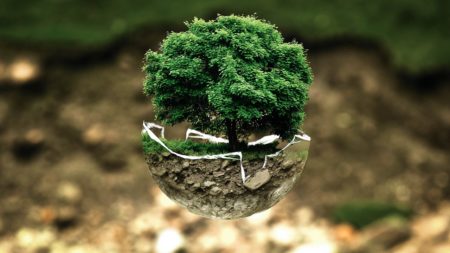
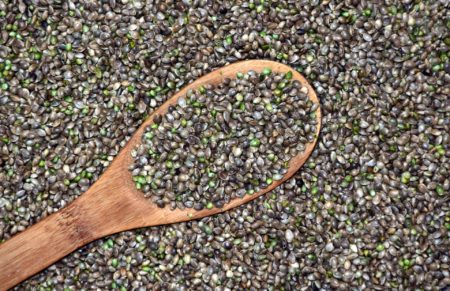
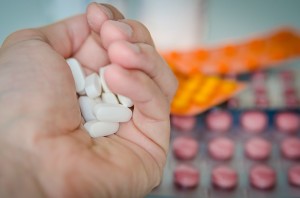
Leave A Comment
You must be logged in to post a comment.